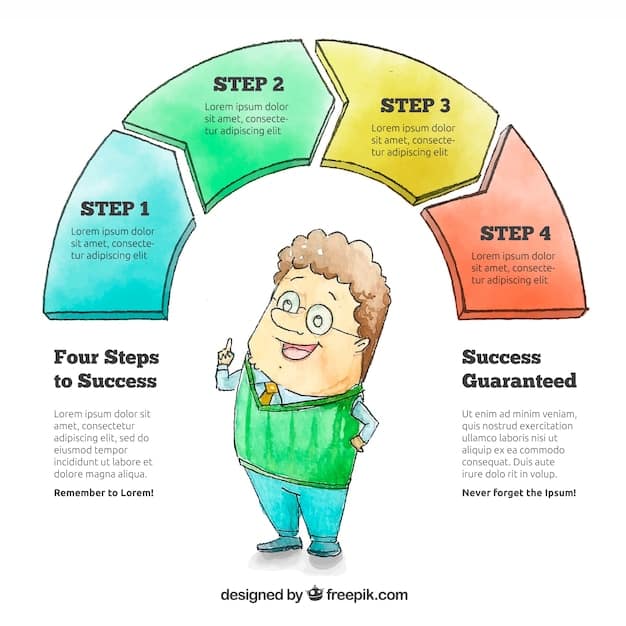SQ3R Method: Your Ultimate Guide to Reading Comprehension

SQ3R Method: A Comprehensive Guide to Effective Reading and Comprehension is a study technique that enhances understanding and retention by surveying, questioning, reading, reciting, and reviewing material.
Unlock the power of effective learning with the SQ3R Method: A Comprehensive Guide to Effective Reading and Comprehension. This proven study technique transforms how you approach reading, boosting comprehension and retention.
Understanding the SQ3R Method
The SQ3R method is a reading comprehension technique that has stood the test of time. It’s designed to help you engage more deeply with the text, making learning more efficient and effective. Let’s dive into what makes this method so valuable.
The Origins of SQ3R
Developed by Francis Pleasant Robinson in his 1946 book “Effective Study,” the SQ3R method was created to help students become active readers. It guides them through a structured process that promotes better understanding and recall.
What Does SQ3R Stand For?
SQ3R is an acronym for five steps: Survey, Question, Read, Recite, and Review. Each step plays a crucial role in enhancing your comprehension and retention of the material.

- Survey: Get a quick overview of the material before diving in.
- Question: Formulate questions to guide your reading.
- Read: Actively read the text, looking for answers to your questions.
- Recite: Summarize the material in your own words.
- Review: Go back over the material to reinforce your understanding.
The SQ3R method is more than just reading; it’s an active engagement with the text. This approach helps you to internalize information and remember it more effectively.
Step 1: Survey – Getting the Big Picture
The first step in the SQ3R method is to survey the material. This crucial step sets the stage for deeper understanding. It involves a quick scan of the text to identify key elements and get a feel for the content.
Why Surveying is Important
Surveying helps you create a mental framework for the text. By getting an overview, you can anticipate the main points and better understand how the information is organized.
How to Effectively Survey
When surveying, focus on key elements that provide a snapshot of the content. This includes titles, headings, subheadings, and any visual aids.
- Read the Title and Subheadings: These provide a clear indication of the main topics covered.
- Examine Visual Aids: Look at graphs, charts, diagrams, and images to understand key data and concepts.
- Read the Introduction and Summary: These sections usually highlight the most important points of the material.
- Skim Paragraphs: Look for keywords and phrases that stand out.
By taking the time to survey, you’ll be better prepared to engage with the material in a more meaningful way. This initial overview can significantly improve your comprehension and retention.
Step 2: Question – Setting a Purpose for Reading
The question phase of the SQ3R method is where you actively engage with the material before even reading it thoroughly. It’s about turning headings and subheadings into questions that you want to answer. Let’s explore how to formulate effective questions.
Why Asking Questions is Beneficial
Formulating questions transforms your reading from a passive activity into an active quest for answers. This not only makes the reading process more engaging but also helps you focus on the key information.
Generating Questions from Headings
The most straightforward way to generate questions is to turn headings and subheadings into questions. This simple technique can significantly enhance your comprehension. For instance, the heading “The Benefits of Exercise” could become “What are the benefits of exercise?”
Crafting Effective Questions
Creating well-thought-out questions is key to maximizing the benefits of this step. Aim for questions that encourage critical thinking and deeper understanding, rather than simple recall. For example, instead of asking “What is the definition of photosynthesis?” try asking “How does photosynthesis contribute to the Earth’s ecosystem?”.

- Use “Why” and “How” Questions: These types of questions encourage deeper analysis.
- Focus on Key Concepts: Generate questions that address the main ideas presented in the material.
- Relate to Prior Knowledge: Ask questions that connect the new material to what you already know.
By setting a purpose for your reading through thoughtful questions, you’ll be more engaged, focused, and likely to retain the information more effectively. This proactive approach is a cornerstone of the SQ3R method.
Step 3: Read – Actively Seeking Answers
Once you’ve surveyed the material and formulated your questions, it’s time to read actively. This step involves more than just passively scanning the words on the page; it’s about engaging with the text to find answers to the questions you’ve posed.
Techniques for Active Reading
Active reading involves several techniques that help you stay engaged and focused. These techniques include highlighting, note-taking, and summarizing key points.
Highlighting and Underlining
As you read, highlight or underline key information that answers your questions. Be selective and avoid highlighting too much, as this can defeat the purpose. Focus on the most important concepts, definitions, and supporting details.
Taking Notes
Taking notes is another effective way to engage with the text. Summarize key concepts in your own words and jot down any additional questions or thoughts that arise as you read. These notes can serve as a valuable resource for review later on.
Active reading is a skill that improves with practice. By engaging with the material in a thoughtful and purposeful way, you’ll be better equipped to understand and remember what you read.
Step 4: Recite – Testing Your Understanding
The recite step in the SQ3R method is all about testing your understanding of the material. It involves summarizing the main points in your own words and answering the questions you formulated earlier. Let’s explore how to effectively recite.
The Importance of Recitation
Reciting helps to solidify your understanding of the material and identify any gaps in your knowledge. By actively recalling information, you’re reinforcing the neural pathways in your brain, making it easier to remember the material later on.
Strategies for Reciting
There are several strategies you can use to recite effectively. These include summarizing out loud, writing summaries, and teaching the material to someone else.
- Summarizing Out Loud: Summarize the main points of each section in your own words. This helps you to process the information and make it more memorable.
- Writing Summaries: Writing summaries is another effective way to recite. This forces you to organize your thoughts and express them clearly.
- Teach Someone Else: Teaching the material to someone else is a great way to test your understanding. If you can explain the concepts clearly, you know you have a good grasp of the material.
Recitation is a powerful tool for enhancing your learning and retention. By actively recalling and summarizing the material, you’ll be better equipped to apply it in real-world situations.
Step 5: Review – Reinforcing What You’ve Learned
The final step in the SQ3R method is to review the material. This step is crucial for reinforcing what you’ve learned and making it stick in your long-term memory. Let’s examine how to effectively review.
Why Reviewing is Essential
Reviewing helps to consolidate your understanding of the material and prevent forgetting. By revisiting the main points, you’re reinforcing the neural pathways in your brain and making it easier to recall the information later on.
Effective Review Techniques
There are several techniques you can use to review effectively. These include rereading your notes, answering your questions again, and testing yourself on the material.
- Reread Your Notes: Reread your notes and highlighted sections to refresh your memory of the main points.
- Answer Your Questions Again: Answer the questions you formulated earlier to test your understanding of the material.
- Test Yourself: Test yourself on the material using flashcards, quizzes, or practice tests.
Make review a regular part of your study routine to ensure that you retain the information over the long term. This final step is what solidifies the knowledge gained through the SQ3R method.
Adapting SQ3R for Different Learning Styles
While the SQ3R method provides a structured approach to reading comprehension, it is by no means a rigid framework. It can be adapted to suit different learning styles and preferences. Let’s explore how you can tailor SQ3R to your individual needs.
Customizing SQ3R for Visual Learners
Visual learners often benefit from incorporating visual aids into the SQ3R method. This might involve creating mind maps, diagrams, or flowcharts to summarize key concepts.
Modifying SQ3R for Auditory Learners
Auditory learners may find it helpful to recite the material out loud or listen to recordings of themselves summarizing the main points. Discussing the material with others can also be beneficial.
Adjusting SQ3R for Kinesthetic Learners
Kinesthetic learners often learn best by doing. They might benefit from creating physical models or engaging in role-playing activities to reinforce their understanding of the material.
By adapting the SQ3R method to your learning style, you can maximize its effectiveness and make learning more enjoyable. The key is to experiment with different techniques and find what works best for you.
| Key Aspect | Brief Description |
|---|---|
| 🔍 Survey | Quickly scan the material for an overview. |
| ❓ Question | Formulate questions based on headings. |
| 📖 Read | Actively read to answer your questions. |
| 🗣️ Recite | Summarize and test your understanding. |
Frequently Asked Questions About SQ3R
▼
The main goal of the SQ3R method is to improve reading comprehension and retention through active engagement with the text. It encourages you to interact with the material, making learning more effective.
▼
Yes, the SQ3R method is flexible and can be adapted to suit different learning styles. You can incorporate visual aids, auditory techniques, or kinesthetic activities to enhance your learning experience.
▼
The time you spend on each step will depend on the length and complexity of the material. Allocate more time to challenging sections and less time to familiar topics. Adjust as needed to fit your schedule.
▼
The SQ3R method is most effective for academic texts, research papers, and other non-fiction materials. It can also be applied to some fiction, but its structured approach is best suited for informational content.
▼
Common mistakes include skipping steps, not formulating thoughtful questions, and not actively engaging with the text. Make sure to follow each step diligently and adapt the method to your personal learning style for the best results.
Conclusion
In conclusion, mastering the SQ3R Method: A Comprehensive Guide to Effective Reading and Comprehension can significantly enhance your learning experience. By following the steps of Survey, Question, Read, Recite, and Review, you can engage more deeply with the material and improve your comprehension and retention. Give it a try and unlock your full learning potential.





